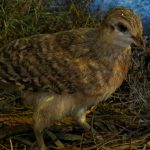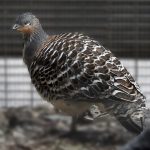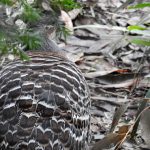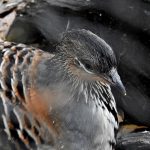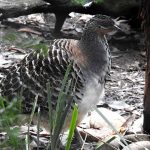MALLEEFOWL
The Malleefowl is a remarkable and unique ground-dwelling bird native to Australia. It’s an elusive species that captures the imagination with its unusual habits and distinctive appearance.
The Malleefowl can be found across semi-arid regions of southern Australia. Its habitat is predominantly the Mallee scrublands, which are characterized by dense, multi-stemmed eucalyptus trees and a floor of spinifex grasses. These birds are spread out in pockets from western New South Wales, through parts of South Australia, into Victoria, and across to the edge of the wheat belt in Western Australia.
Malleefowl are medium-sized birds, with a length of about 60 cm. and a weight that can reach up to 2.5 kilograms. They have intricately patterned plumage that provides excellent camouflage against the leaf litter of the forest floor. Their feathers are a mix of brown, black, grey, and white, with a series of spots and bars that resemble the dappled sunlight filtering through the Mallee canopy.
These birds are predominantly terrestrial, spending most of their time on the ground. They’re shy and secretive, making them hard to spot in the wild. When it comes to their diet, Malleefowl are omnivores, feeding on a variety of seeds, fruits, insects, and other small creatures they find while foraging in the leaf litter.
One of the most fascinating aspects of the Malleefowl is their nesting behaviour. They don’t build nests in trees; instead, they construct large mounds on the ground from soil, leaves, and other organic material. The male Malleefowl is primarily responsible for the mound, which he diligently maintains, ensuring it’s at the right temperature for incubating the eggs. He does this by adding or removing material to regulate the mound’s temperature, which is a remarkable feat considering they do not have the advantage of constant internal body heat like mammals.
The temperature within a Malleefowl mound is meticulously regulated by the male, often staying around 33 degrees Celsius, despite external temperatures that can vary dramatically.
Malleefowl chicks are incredibly self-reliant. Upon hatching, they dig their way out of the mound and are able to fend for themselves immediately, requiring no parental care.
The Malleefowl is listed as vulnerable, with its numbers declining due to habitat loss, predation by introduced species like foxes and feral cats, and altered fire regimes that affect the vegetation they depend on.
The Malleefowl is an emblem of Australia’s unique natural heritage, and its survival is a testament to the resilience and adaptability of wildlife in the face of a challenging environment. Conservation of this species is not just about protecting a single bird but also about preserving the intricate web of life that constitutes the mallee ecosystems of Australia.

